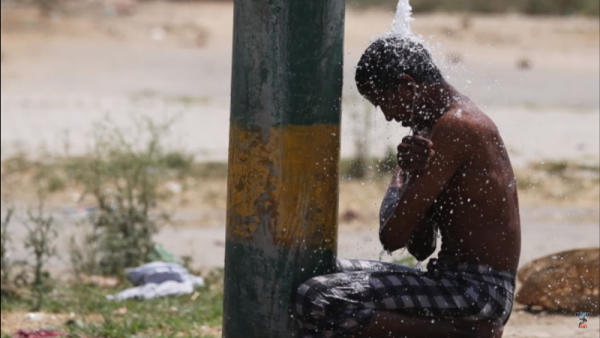By KM Diaz, | June 09, 2017

India is more likely to experience deadly heat wave now compared to a half century ago. (YouTube)
A new study published on Wednesday revealed that India is more likely to experience deadly heat wave now compared to a half century ago, all it takes is to increase at least average temperature of 0.5 degrees Celsius.
The findings are sobering since the world is now on the verge of more warming by the end of the century. On May 28, Asia was gripped by the heat wave, in which the southern city of Turbat in Pakistan had the record of 53.5 C (128.3 F). This is the hottest temperature ever recorded in the world for the month of May. Meanwhile, the Indian capital of New Delhi reached the temperature of over 44 C (111 F).
Like Us on Facebook
Some scientists already warned years ago that the future of climate change can make more intense heat waves, frequent and long-lasting.
Omid Mazdiyasni, a climatologist from the University of California, Irvine, said that it is getting hotter and more heat waves could kill more people. Although they already knew the impact, they did not expect it to be that big.
The study, published in Science Advances, indicates that while the mean temperatures of India increased by more than 0.5 C between 1960 and 2009, the country's chance of facing massive heat-related mortality event shot up by 146 percent.
The general public might assume that the rise of 1 or 2-degree temperature is not significant. But, the findings reveal that even a small change could lead to more heat waves and more death, according to Amir AghaKouchak, the co-author of the study and also a climatologist at UC Irvine.
They accounted the income levels and a fast-rising population of India and found a stronger correlation between deaths of poor people and heat waves. Researchers said that the majority of the 1.25 billion people in India are poor. They only have few options when temperatures get hot each year, wiping out animals in the farm, drying river beds and forests. Additionally, more than 25 percent has no access to electricity access.
Meanwhile, the majority of cities and states in India are not yet ready to handle more heat, although they already know the devastation it can wreak. Around 1,200 people died due to heat-related conditions in the western city of Ahmedabad in 2010. The city officials then introduce seven-day weather forecasts and warnings, pointing cool-air shelters in summer and extra supplies of water.
In 2015, more than 2,500 were killed across India because of heat. After the incident, Natural Resources Defense Council - an international advocacy group in New York - backed nine other cities.
They proposed a plan in educating children about heat risk, there should be stocks of extra water and ice packs in hospitals, medical workers were trained to identify dehydration, heat stroke, and heat stress. But, about 11 million people are only covered in these nine cities, not even 1 percent of India's population.
The director of the International Centre for Climate Change and Development in Dhaka, Saleemul Huq, said that heat wave stress is a new aspect that has not been recognized, and it is now a threat for climate change in the region. The heat wave is inevitable, Huq sees a more similar trend in mortality and recommends having more study regarding heat wave.
-
Use of Coronavirus Pandemic Drones Raises Privacy Concerns: Drones Spread Fear, Local Officials Say

-
Coronavirus Hampers The Delivery Of Lockheed Martin F-35 Stealth Fighters For 2020

-
Instagram Speeds Up Plans to Add Account Memorialization Feature Due to COVID-19 Deaths

-
NASA: Perseverance Plans to Bring 'Mars Rock' to Earth in 2031

-
600 Dead And 3,000 In The Hospital as Iranians Believed Drinking High-Concentrations of Alcohol Can Cure The Coronavirus

-
600 Dead And 3,000 In The Hospital as Iranians Believed Drinking High-Concentrations of Alcohol Can Cure The Coronavirus

-
COVID-19: Doctors, Nurses Use Virtual Reality to Learn New Skills in Treating Coronavirus Patients
















